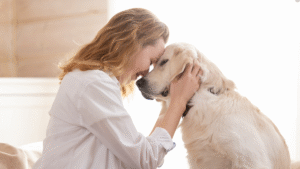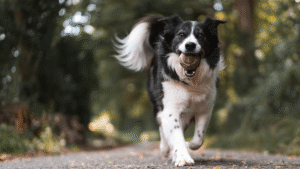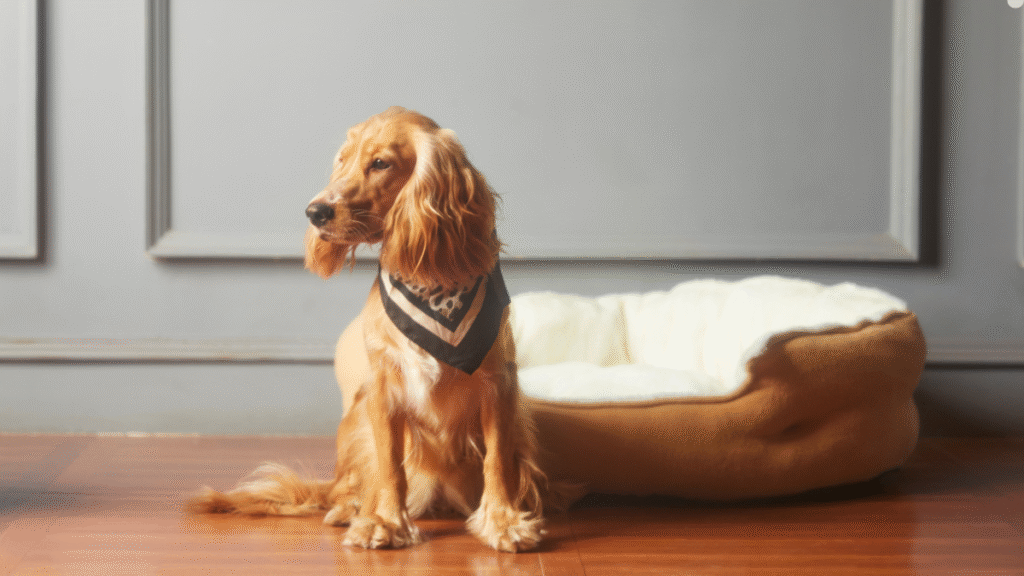Teaching your dog to sit is one of the easiest and most important commands you can teach. It’s also the first thing new dog owners usually focus on, since it’s the basis of good manners and obedience.
Whether you have a puppy or an adult dog, it is still possible to teach your dog to sit quickly—even in under five minutes—if you know how.

Why Teaching “Sit” Is So Important
Before we dive into the training steps, first let’s look at why “sit” is one of the most useful commands you can teach your dog.
When your dog knows how to sit on command, it helps you control their behavior in everyday situations. For example:
-
It stops them from jumping on visitors or barking at other dogs.
-
It helps them calm down before walks or feeding time.
-
It serves as a basis for more advanced obedience, like “stay” or “down.”
-
It’s a polite way to address bad behaviors like begging or lunging.
Teaching your dog to sit is also a great way to strengthen your relationship. It gets your dog to pay attention to you, listen to your cues, and learn that being obedient is how they earn rewards.
What You’ll Need Before You Start
The great thing about this training is that you don’t need much. A few key items and some patience are all you need:
-
Small, high-value treats (tiny pieces of your dog’s favorite food, like cooked chicken, cheese, or soft training treats)
-
A quiet, distraction-free area
-
Patience
Avoid long sessions. Dogs—especially puppies—have short attention spans, and a few quality minutes of training will almost always be better than one long session.

Step-by-Step: How To Teach Your Dog To Sit In Under Five Minutes
Okay, now it’s time to get into the actual method you can use to teach your dog to sit quickly. It is a simple technique based on positive reinforcement and body language.
Step 1: Get Your Dog’s Attention
Before you start, make sure your dog is focused on you. Call their name once in a happy tone. When they look at you, give them a treat or verbal praise such as “Good dog!”
This helps your dog learn that paying attention to you is a good thing and sets the stage for learning the new command.
Step 2: Use a Treat to Lure the Sit Position
Hold a small treat near your dog’s nose so they can smell it but not grab it. Slowly move your hand up and slightly over the top of their head.
Most dogs will naturally lower their back end to the floor to follow the treat with their eyes. The moment your dog’s bottom hits the floor, say “Sit!” in a calm, firm voice and immediately reward them with the treat.
Timing is crucial. Rewarding your dog the second they perform the behavior helps them understand which action earned the reward (sitting) and the word you used to describe the action (“sit”).
Step 3: Repeat and Reinforce
Repeat this process several times in a row—five to ten repetitions should be enough. Keep your voice positive and enthusiastic.
Each time your dog sits, say “Sit,” then praise and reward. Within a few repetitions, your dog will start to associate the word “sit” with the action and the reward.
If your dog already understands the motion from following your hand, you can start to fade the treat lure by showing your empty hand and then rewarding after they sit.
Step 4: Add the Verbal Command
Once your dog is sitting consistently with the lure, start to phase out your hand signal and rely more on your voice.
-
Say “Sit” first.
-
Wait one second.
-
If your dog doesn’t move, use the hand motion as a reminder.
-
As soon as they sit, reward and praise.
After a few more repetitions, your dog will begin to sit as soon as they hear the word, without needing the hand signal every time.
Step 5: Practice in Short, Fun Sessions
Keep training sessions short—two to three minutes per session is plenty, especially for puppies. You can do several mini-sessions throughout the day.
Dogs learn through repetition, but they also need variety. Practice “sit” before meals, during walks, or when guests come to the door. The more your dog learns that “sit” means the same thing everywhere, the more reliable the behavior will be outside training sessions.

Troubleshooting: Common Mistakes and How to Fix Them
Even though teaching your dog to sit is simple, a few common mistakes can slow progress. Here’s how to avoid them:
-
Saying the command too many times
Don’t repeat “sit, sit, sit!” over and over. Say the command once, then wait a few seconds. If your dog doesn’t sit, show the lure or reset and try again. -
Moving too quickly
If you stop rewarding too early or remove the treat lure too soon, your dog may lose interest. Slowly taper off treats once your dog is consistent. -
Using punishment or frustration
Dogs do not learn through scolding. They learn through reward-based training. Keep your voice upbeat and patient. If you’re frustrated, take a short break. -
Training in a distracting environment
Don’t start in a place with lots of noises, people, or other pets. Start in a quiet room; once your dog has the command down, gradually add distractions.
The Science Behind Why This Works
This method works because it uses positive reinforcement, one of the most effective and humane training approaches for dogs.
Positive reinforcement means you reward a behavior with something desirable—a treat, praise, or play. When your dog performs that behavior, their brain gets a dopamine hit, which reinforces the desire to repeat it. Over time, this positive association forms a habit.
Force-based methods such as yelling, scruffing, or pushing your dog into position only create fear and frustration and are far less effective. Positive reinforcement teaches faster and builds trust and a stronger relationship.
How to Keep the “Sit” Command Strong Over Time
Once your dog knows how to sit, you should keep practicing to ensure they maintain that good behavior.
-
Gradually fade the treats
Don’t stop using treats immediately. Once your dog is reliable, start rewarding every other sit, then every third, and so on. Replace treats with praise, petting, or play as rewards. -
Practice in different environments
Dogs don’t automatically generalize behaviors. Your dog may sit perfectly in the kitchen but refuse the command at the park. Practice “sit” in various places—inside, outside, on walks, and around distractions. -
Incorporate it into daily routines
Ask your dog to sit before you open the door, before feeding them, or before playing fetch. This keeps the behavior fresh and enforces good manners. -
Reward calmness
Use “sit” as a tool to teach calm behavior. For example, if your dog jumps up when you come home, ask them to sit before greeting them. Reward them for staying down to reinforce self-control.

Teaching Sit Without Treats (Advanced Tip)
Once your dog knows the command, you can transition to treat-free training using praise and life rewards. A life reward is anything your dog really wants—going outside, getting the leash on, or playing fetch.
Example: ask your dog to sit before you open the door to go for a walk. Say “Good sit!” and then open the door as the reward. This teaches your dog that listening to you earns access to things they want, not just food.
When To Seek Extra Help
If your dog struggles to learn how to sit, don’t worry. Some dogs are naturally more stubborn, distracted, or anxious than others. In that case:
-
Break training into shorter, more frequent sessions.
-
Use higher-value rewards.
-
Remove distractions and practice in a quiet area.
-
Try finding a professional trainer who uses force-free methods if your dog doesn’t respond after a few days of consistent practice.
Final Thoughts
Teaching your dog to sit in under five minutes may seem too good to be true, but with the right approach it is absolutely achievable. Consistency, timing, and positivity are key. Dogs learn best when training feels like a fun game, not a chore.
With this simple step-by-step process, you’ll have your dog sitting politely on command in no time. It’s a skill that will make everyday life with your dog much easier, safer, and more enjoyable.
- 5 Cheap Alternatives To Dog Training Equipment - November 12, 2025
- Homemade Calming Spray To Help Dogs During Training - November 12, 2025
- 7 DIY Dog Training Tools You Can Make From Household Items - November 12, 2025
